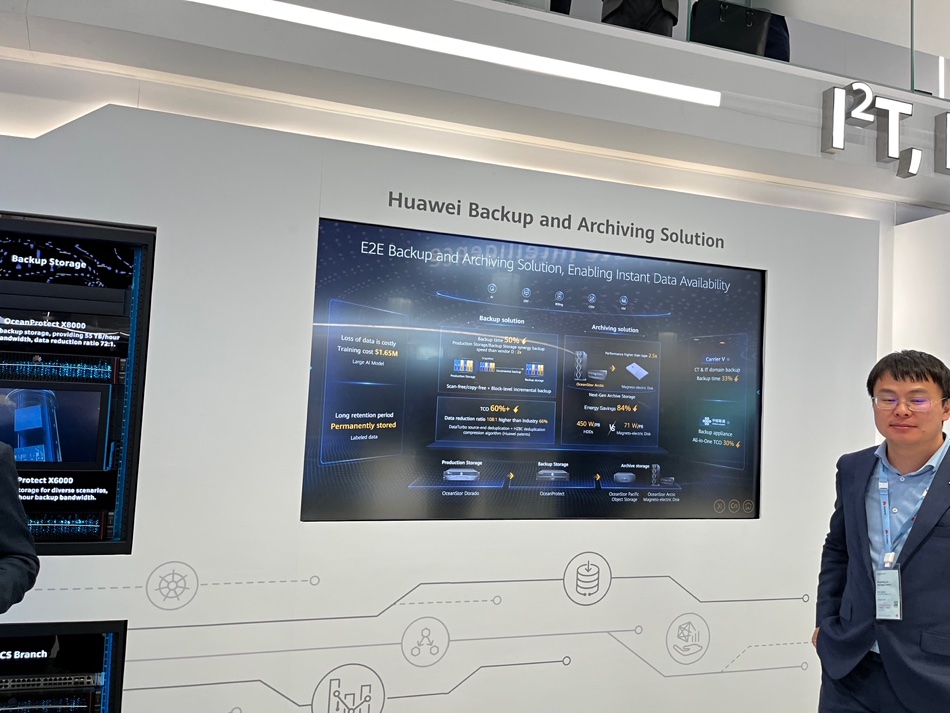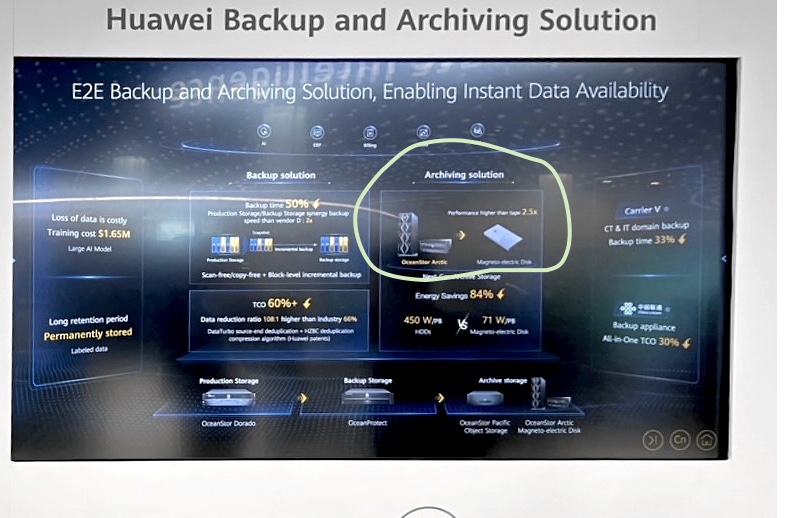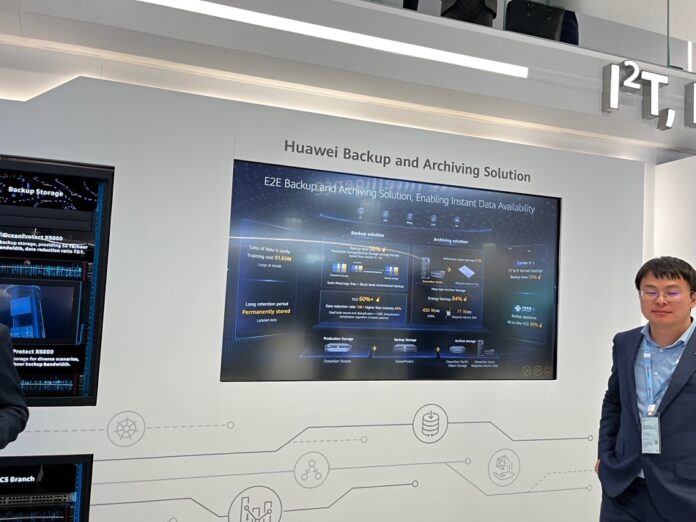Huawei is developing an archival storage system using magneto-electrical disks (MED), claiming its power draw is similar to a spin-down disk archive.
This OceanStor Arctic device first emerged in a presentation at MWC 24 by Dr Peter Zhou, president of Huawei’s data storage product lines. What we know so far is that it is slated to lower total connection cost by 20 percent compared to tape and reduce power consumption by 90 percent compared to hard drives. The first MED generation’s capacity will be like a big capacity disk: around 24TB. A rack system is said to have more than 10PB capacity, and its power consumption to be less than 2KW. The overseas (outside China) release will take place in the second 2025 half.
Analyst Tom Coughlin contributed a smartphone photo of a backup and archiving slide presented by Huawei at another event, and this has a section devoted to the OceanStor Arctic device.

We tried to enhance this to bring out the OceanStor Arctic section, and circled it in the next image:

The Archiving solution section of the slide has three visual elements: a rack, a 4 or 6RU chassis, and a disk. You can read this as the drive fits in the chassis which fits in the rack. We’re checking with Huawei to get this confirmed and will update this story if we hear back.
The text reads, as far as we can see:
- Performance higher than tape – 2.5x
- Energy Savings – 84 percent
- 450 W/PB HDDs vs 71 W/PB Magneto-electric Disk
We have been pondering what the term magneto-electric disk might mean. Dictionary-wise the magneto-electric effect refers to any linkage between the magnetic and the electric properties of a material. That could conceivably describe a hard disk drive’s technology, which involves using electricity to change the polarity of a magnetic region on a disk platter’s surface.
Huawei claims its MED has 90 percent lower power consumption than a hard disk drive. How can it spin a disk and consume so little power?
Supplier Disk Archive sells a spun-down disk archive. That has a far lower power consumption than permanently spinning HDDs – it quotes 210 watts/PB with 22–24 TB disks. A 10PB DiskArchive system would then need 10 x 210 watts, meaning 2.1KW. That’s not too far way from a 10PB Huawei MED rack needing <2KW.
We are asking Huawei if the OceanStor Arctic device uses spun-down disks and its initial response – through a spokesperson – was “My understanding is that the product line may not be in a position to disclose more information about the product as it’s not yet available in overseas market.” We live in hope.








